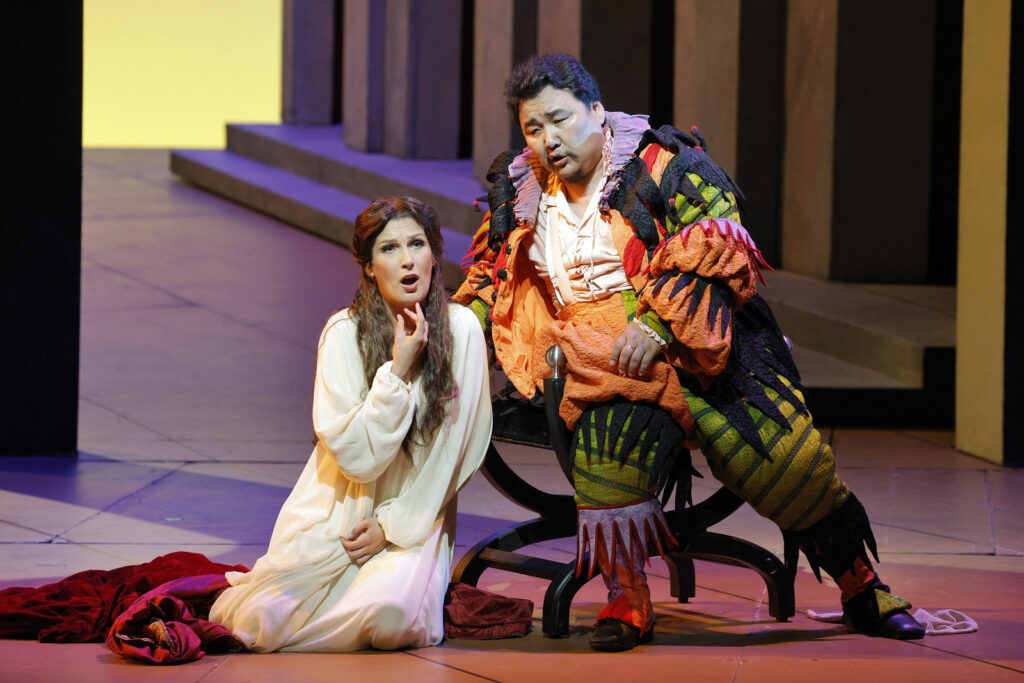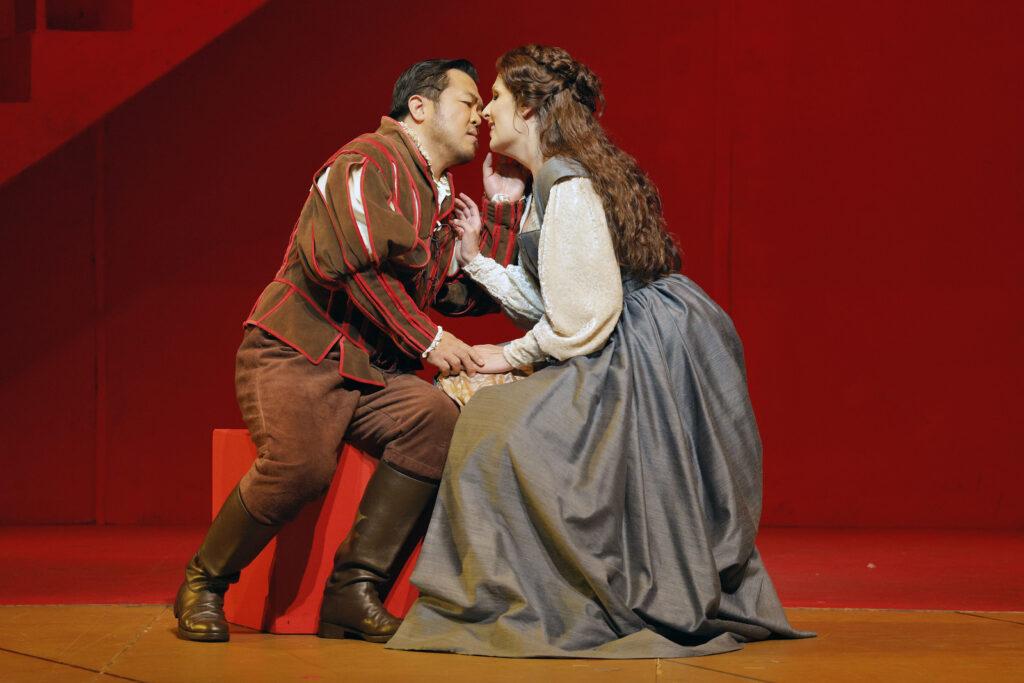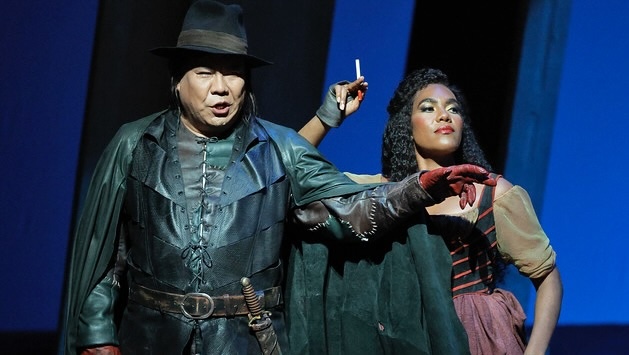San Francisco’s 1932 War Memorial Opera House (honoring the city’s WWI dead soldiers) is among the world’s more lavish examples of theater architecture, surpassed, in my experience, only by the Palais Garnier in Paris and its smaller version, the Opéra Garnier Monte-Carlo.
The War Memorial Opera House is indeed awesome, awaiting awesome performances of awesome art. And there has been a whole lot of it over the years.
Rigoletto itself is an awesome opera. It has taken part in 35 of San Francisco Opera’s 103 seasons, though in recent times, with ever fewer operas each season, Rigoletto’s turn comes up much less frequently. The most recent new production was in 1997, during the Lotfi Mansouri years, staged by theater director Mark Lamos, then head of Hartford Stage. This production returned 2001, in 2006, in 2012, as well as in 2016, before finding itself onstage yet again in this 2025 edition.
With continuing refinements by the directors who have come to stage its revivals, and lighting designers who are dealing with a new generation of lighting instruments, you can be sure Rigoletto just now bears little resemblance to Mr Lamos’ original.
What will have remained unchanged is the stage set by designer Michael Yeargan, whose designs are very often on the War Memorial stage. His Rigoletto sets are in sympathy with a theater director’s penchant for cleansing his staging of all accoutrement, save the needed knife in Rigoletto, plus a small chair and table for the final scene, and ridding the stage of all extraneous decor, leaving only the barest outline of the abstracted shapes of a generic Italian Renaissance city.

The cast for this edition boasts a Mongolian baritone, Romanian soprano, a Chinese tenor, a Beijing born bass, a Ukrainian born baritone, a Black American mezzo-soprano (plus a bevy of Adler Fellows [SF Opera’s young artist program], and a couple of choristers in named roles). San Francisco Opera’s Music Director herself, conductor Eun Sun Kim, is South Korean.
Argentine stage director Jose Maria Condemi provided a very efficient staging, carefully placing his abstractly, if period costumed actors in musically adept positions, adding artful sweep to the opening ball, embellishing the Act 1 Sparafucile / Rigoletto duet by adding a shadowy Maddalena, and deftly creating the furtive energy of Gilda’s abduction. Given the diversity of the casting — its criteria based solely on vocal color — this Rigoletto was not about telling this old fashioned, heartbreaking story, it was about singing.
More precisely it was a Rigoletto that responded to the musical vision of its conductor, Mme. Kim, one that precluded its actors from becoming the characters who enact Victor Hugo’s intriguing tale (the exploits of France’s king Francis I). The maestra created a ruthless, calculated musical pace that flowed inexorably from the Duke of Mantua’s lasciviousness and the consequent ferocious curse of Monterone (lead photo, Aleksey Bogdanov as Monterone) to Rigoletto’s final two words, “la maledizione” (the curse), leaving gracious pauses to indulge in the famed arias, duets and unparalleled quartet that make Rigoletto one of the repertory’s beloved masterpieces.
Conductor Eun Sun Kim is at her best in big music (Verdi is loud), working with big (important) singers who enable her to find the magnificence of the repertory’s masterpieces, rather than search for their musical and dramatic subtleties. The San Francisco Opera Orchestra is her very willing partner.
Rigoletto, sung by famed Rigoletto, Mongolian bass Amartuvshin Enkhbat, staggered, humpless, through the role in magnificent voice, searing the stage with his “Cortegiani”, and of course with his final “la maledizione!” Gilda was sung by Romanian soprano Adela Zaharia in a warm voice that sailed richly into the stratosphere making her a vocally potent, if not delicate heroine. The “Si, vendetta” duet of Rigoletto and Gilda was remarkable for the very clear articulation of the repeating triplets, possible in the restrained, solid pacing imposed by the maestra.

If not the expected swashbuckling Duke of Mantua, Chinese tenor Yongzhao Yu is vocally a resplendent Italian tenor, finding the flashy catch (sob) that made the duke seem vulnerable when needed. He easily knocked off the opera’s famed showpieces in proper smooth, bright and agile lyric tenor tone, no swagger in sight. Of great vocal resonance, Chinese born, Houston Opera finished bass Peixin Chen intoned the for-hire murderer Sparafucile with formidable, black voiced panache.

Mezzo-soprano J’Nai Bridges was gold-plated casting for the cameo role of Maddalena. Baritone Aleksey Bogdanov well fulfilled the maestro’s wish for a ferocious rather than intimidating Monterone. The Adler Fellows and the San Francisco Opera choristers in named roles succeeded with varying degrees of success.
It was an evening of awesome art, missing was any sense of theater.
Michael Milenski
War Memorial Opera House, San Francisco, California, September 19, 2025
All photos copyright Cory Weaver, courtesy of San Francisco Opera.